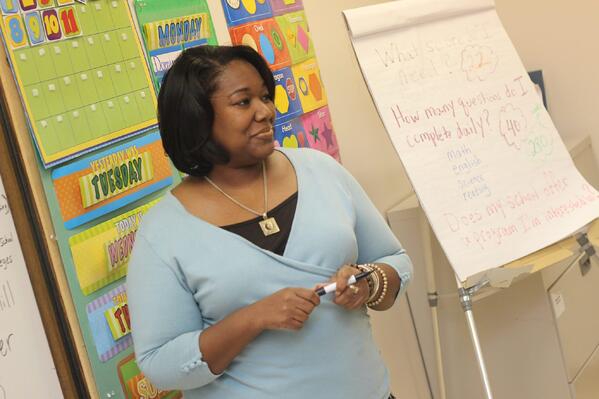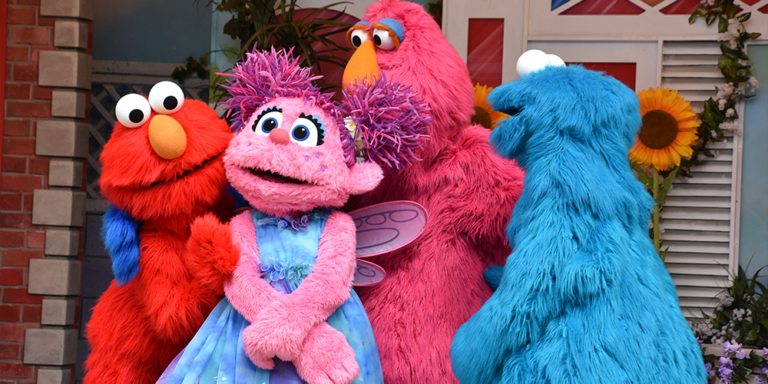This past year, I made the decision to go back into teaching. After four years in administration and instructional coaching, I headed back into the classroom. It felt like home. It felt right. I thought: this should be easy. Previously, I had taught 6th grade language arts for nine straight years. By year six, I felt like I finally knew what I was doing. So, how hard could this transition back into the classroom be?
Wow, much harder than I thought. I thought teaching would be like riding a bike. Sure, I might not have taught in a few years, but as a coach, I was still in classrooms constantly. Reading and writing were my strengths as an educator, so I thought I should have been able to hop right back into it. But, the transition has been harder than I thought.

Lucky for me, I had my new instructional coach there to help. Being an instructional coach myself for a few years, I knew immediately that I wanted his help. His background was language arts and middle school. Meeting him right away I could tell not only was he a great teacher, but he had a ridiculous amount of resources. Immediately, I asked to sit down with my coach and start working together. I was obviously familiar with the coaching cycle, the questioning process, the goal setting, the planning, and more. But, I quickly realized that being the coachee rather than the coach is so different. I had never had the chance to work with an instructional coach as a teacher. How do I get the most out of working with my instructional coach?
“When You Shut Down Vulnerability, You Shut Down Opportunity.” -Brene Brown
The first thing I realized very quickly was in order to be coached I have to be vulnerable. It seemed simple enough. We talk about vulnerability constantly in our society–from being open to taking risks to being okay with failure. I felt like this came easily to me when I was teaching before. But, all I have to say is easier said than done. Vulnerability was okay for me before, because I already felt confident in my teaching at years eight and nine. It’s easy to be vulnerable when you mostly know what you’re doing and have only a few things to work on. So, was I really ever truly vulnerable? Probably not.
Going back into the classroom, I quickly realized that I was feeling much more self-conscious about my teaching than ever before. What I continued to get caught up on was the fact that I should know what I’m doing, because I’ve done this before. However, I was relearning the curriculum, finding classroom management systems that work best, and trying to write impactful and engaging lessons all while trying to stay afloat with all the other tasks and work that come with being a teacher.
When I first met with my new coach, I found myself feeling defensive and frustrated because the ideas being offered were things I do and should know already, when in reality, I really needed to hear and take those pieces of advice. I left one coaching session feeling absolutely defeated on a Friday afternoon. It wasn’t until I sat and reflected on my lessons for the week that I realized that I was not allowing myself to be vulnerable. I was working so hard to prove that I was a good teacher rather than just allowing myself to be open to new ideas and advice. When we close ourselves to vulnerability, we don’t grow.

Luckily, I truly work with the best instructional coach, and I was able to vocalize my feelings, and it allowed us to move forward and actually accomplish some pretty amazing things so far this school year. Because of our partnership, we were able to set clear classroom expectations for students, develop a well-run reader’s workshop, and build in SEL check-ins with students. If I hadn’t stopped to check myself, I do not think I would have made the gains I have with my students this school year. The bottom line is that if we spend so much of our time worrying about how our teaching is perceived by others, we often miss the opportunity to grow and learn even after 13 years in the education field. 😉
“Clarity affords focus.” -Thomas Leonard
As an instructional coach, it was completely embedded into my practice to help teachers identify a goal for their students and work with me. Without an endgame, our work easily became disorganized, confusing, and sometimes frustrating. As I mentioned earlier, I knew right away this school year I wanted to work with a coach, so I jumped right in. However, I did not have a single clue what I wanted to work on with my coach. Instead, I had 30 things I wanted to work on.
An instructional coach is an amazing resource and can help us problem-solve on a variety of things, but in my experience, the most impactful coaching came from having a strong, clear goal. When we are clear about our goals and what we want in a coaching session, so many wonderful things fall into place.
- We can create a clear path for where we are going in our teaching.
- We feel motivated to reach that goal, because we chose it ourselves.
- We can accurately measure our success.
This is not to say that coaching cannot be successful with “one-offs” where a coach helps on a few small things. But, our teaching and students’ learning is more strongly impacted when we have a clear goal that we work towards from beginning to end. Just like we want students to have clarity in what they are learning and how they will achieve it, coaching works the same way.
Overall, if you are lucky enough to have an instructional coach in your building, remember that it is okay to feel uncomfortable and unsure at first. It takes a big person to admit they need help even after teaching for 10 or 20 years. But, the reality is that we all can continue to use help, and we all can continue to grow.
“If we’re growing, we’re always going to be out of our comfort zone.” -John Maxwell







